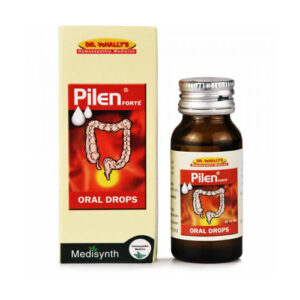Indication / Benefits
Allium Cepa, commonly known as Onion, is a homoeopathic medicine derived from the plant Allium cepa. Belonging to the Amaryllidaceae family, it has been traditionally valued for its therapeutic properties in treating respiratory and allergic conditions. In homoeopathy, Allium Cepa is primarily used to address symptoms such as runny nose, sneezing, and itchy eyes. It is also employed for its effects on alleviating symptoms of colds, hay fever, and conditions aggravated by changes in weather and exposure to allergens.
Common Names:
Hindi: Pyaaz
English: Onion
?
SBL’s Allium Cepa ?can be helpful in the following conditions:
- Acute Rhinitis and Cold
- Allium Cepa is effective for acute rhinitis where there is an acrid nasal discharge, accompanied by laryngeal symptoms.
- The remedy is particularly useful for colds aggravated by warm environments and for individuals who experience worsening symptoms in the evening.
- Symptoms improve in the open air.
- This remedy is well-suited for phlegmatic individuals and colds triggered by damp, cold weather.
- Catarrhal Headache and Post-Traumatic Neuralgia
- It addresses catarrhal headaches, which are predominantly located in the forehead and worsened by warm rooms or evening.
- The remedy is also indicated for neuralgic pain that resembles fine threads, often following nerve injuries or amputations.
- The headache typically subsides during menstruation and returns afterward.
- Conjunctivitis and Eye Irritations
- Allium Cepa is indicated for red, burning eyes with excessive, watery, and bland lachrymation.
- The eyes may be sensitive to light, and symptoms improve when exposed to fresh air.
- The remedy also helps with burning sensations in the eyelids.
- Acute Nasal Discharge and Hay Fever
- The remedy is useful for sneezing, particularly when transitioning to a warm room, and for a profuse, watery nasal discharge that is extremely acrid.
- It helps with a sensation of a lump at the root of the nose and is effective for hay fever and fluent coryza, which may be accompanied by headache, cough, and hoarseness.
- Nasal polyps can also be addressed with this remedy.
- Gastric and Intestinal disturbances
- Allium Cepa is suitable for treating symptoms like voracious appetite, pain in the pyloric region, thirst, belching, and nausea.
- It is also used for abdominal issues such as rumbling, offensive flatus, and pain in the left lower abdomen.
- Constipation and discomfort from dietary changes, especially after eating meat, are also managed with this remedy.
- Diarrhea and Rectal Irritation
- The remedy addresses diarrhea with very offensive flatulence and discomfort in the rectum, including stitches, itching, and cracks around the anus.
- It also helps with a sensation of glowing heat in the rectal area.
- Urinary Tract Discomfort
- Allium Cepa is indicated for sensations of weakness in the bladder and urethra, increased urine output accompanied by coryza, and urine that is red with painful urination.
- It is also used for burning and pressure in the urethra.
- Respiratory Irritations and Cough
- The remedy helps with hoarseness, a persistent cough triggered by cold air, and a tickling sensation in the larynx.
- It is useful for feelings of pressure in the chest, a constricted feeling in the epiglottis, and pain that radiates to the ear.
- Joint and Limb Discomfort
- It is effective for joint pain, particularly in the heels, and painful conditions affecting fingers around the nails.
- The remedy helps with neuralgic pain in stumps and discomfort from wet feet. The arms and legs may feel sore and fatigued.
- Disturbed Sleep
- Allium Cepa is indicated for disturbances in sleep, including yawning with headache and drowsiness, gaping during deep sleep, and waking up around 2 am.
Key Ingredients
Allium cepa
Dosage
As prescribed by the physician.
Safety Information
- Read the label carefully before use.
- Do not exceed the recommended dose.
- Keep out of the reach of children.
- Store in a cool, dry place; avoid sunlight and heat.
- Avoid strong smells (onion, hing, mint, garlic) during use.
- Allow 15 minutes gap between two homoeopathic medicines, 30 mins gap between Homoeopathic medicines and food, or one hour gap between Homoeopathic medicines or another system of medicines.




